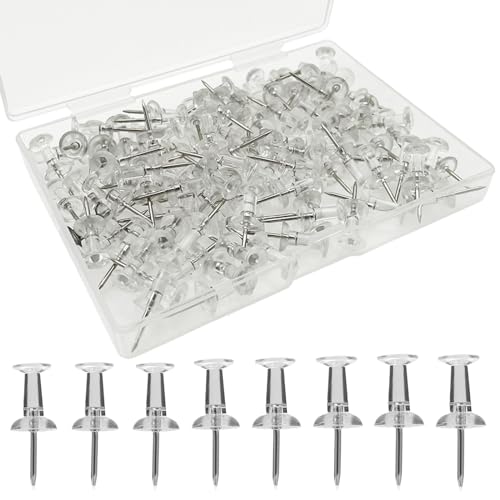What are Thumb Tacks?
Thumb tacks are small, sharp metal objects that are used for various purposes, such as attaching papers to bulletin boards or walls. They consist of a flat metal head and a thin, pointed metal pin. The pin is inserted into the desired surface, holding the tack in place.
The Design and Functionality of Thumb Tacks
Thumb tacks are designed with a flat head for easy gripping and handling. The head is typically made of metal or plastic and can be decorated with various colors or designs. The pin, on the other hand, is made of sharp metal, usually steel or brass, which allows it to pierce through materials.
When using a thumb tack, the pin is held between the fingers and pressed against the surface where it needs to be inserted. With a slight push, the pin enters the material and secures the tack in place. The flat head provides stability and prevents the tack from sliding or falling out.
How do Thumb Tacks Work?
The functionality of thumb tacks is quite simple. The sharp pin at the end of the tack allows it to puncture and penetrate various materials, such as paper, corkboard, or fabric. The tack is typically used to attach papers, photos, or notes to a surface.
When inserting a thumb tack into a material, the pin pierces through the object, creating a small hole. The resistance and density of the material determine the force required to insert the tack. Once the tack is in place, the pressure from the pin against the material keeps it securely attached.
Common Uses of Thumb Tacks
Thumb tacks are versatile tools that find numerous applications in everyday life. Some common uses include:
1. Bulletin Boards: Thumb tacks are commonly used to attach papers, announcements, or memos to bulletin boards. The tack securely holds the material in place and allows for easy removal or replacement.
2. Wall Decorations: Thumb tacks can be used to hang lightweight decorations on walls without causing significant damage. By carefully pressing the tack into the wall, decorations such as posters or artwork can be displayed.
3. Crafts and DIY Projects: Thumb tacks are often used in various arts and crafts projects. They can be used to secure fabric, ribbon, or other materials to a surface. Thumb tacks with decorative heads are especially popular for these purposes.
4. Organizational Tools: Thumb tacks can be used to create visual aids for organizing tasks or schedules. By pinning notes or reminders to a board or wall, they serve as visual cues.
Safety Considerations when Using Thumb Tacks
While thumb tacks are generally safe to use, it’s important to take some precautions to avoid accidents or injuries:
1. Handle with Care: The sharp pin of a thumb tack can cause injuries if not handled properly. Always hold the tack by the flat head to prevent accidental punctures.
2. Use Correctly: Thumb tacks are designed to be used in soft materials like paper or corkboard. Avoid using excessive force or using them on hard surfaces, as this may break or bend the pin.
3. Store Safely: When not in use, keep thumb tacks securely stored in a container or box. This prevents accidental injuries and keeps them organized.
4. Keep Away from Children: Thumb tacks should be kept out of reach of children as they can pose a choking hazard if swallowed.
Thumb tacks may seem like simple objects, but their functionality and versatility make them indispensable tools in various settings. Whether used for organization, decoration, or crafts, thumb tacks offer a practical and convenient way to secure items to surfaces.






